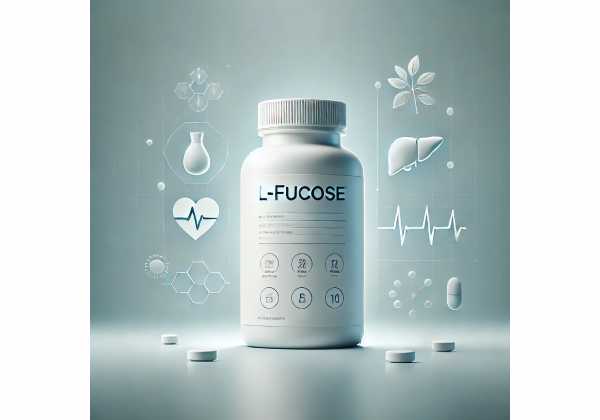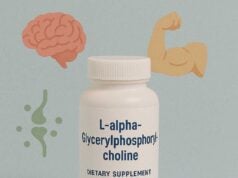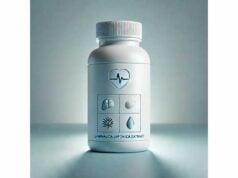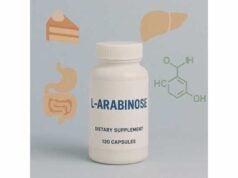
L-fucose is a six-carbon deoxy sugar that your body uses to decorate thousands of proteins and lipids with “fucosylation” marks. Those tiny chemical tags guide how immune cells roll along blood vessels, how your gut talks to friendly microbes, how nerves wire up, and how many hormones and antibodies behave. You already make fucose internally and you consume it naturally in foods (especially through human milk oligosaccharides early in life). As a supplement, L-fucose is niche—but increasingly discussed—because specific medical conditions respond to fucose therapy and because fucosylated prebiotics such as 2′-fucosyllactose (2′-FL) are being studied in adults for microbiome support. This guide explains what L-fucose is, where it truly helps, how to use it correctly (or avoid it), and how researchers dose it in clinical contexts like congenital disorders of glycosylation. You will also learn the difference between free L-fucose and fucosylated oligosaccharides, what affects response, and how to think about safety, interactions, and realistic expectations.
Key Insights
- Fucosylation shapes immunity, gut-microbe dialogue, and cell signaling; defects can be addressed in select genetic disorders with supervised L-fucose.
- 2′-fucosyllactose (a fucosylated prebiotic) is well tolerated in adults at 5–20 g/day; free L-fucose dosing for rare CDGs is weight-based and strictly medical.
- Start low and assess tolerance; common effects are mild GI changes. Avoid unsupervised use in metabolic or genetic fucose disorders.
- Do not self-treat serious diseases (e.g., immune or oncologic conditions) with L-fucose—use only under specialist care when a clear indication exists.
Table of Contents
- What L-fucose is and why it matters
- Where L-fucose may help
- How to use L-fucose correctly
- Variables that change your response
- Mistakes, interactions, and troubleshooting
- Dosage: how much and when
- Safety, side effects, and who should avoid
- What the evidence says today
What L-fucose is and why it matters
L-fucose is a monosaccharide (a simple sugar) that cells use as a building block to “fucosylate” many molecules. In practice, that means enzymes called fucosyltransferases attach fucose to proteins or lipids, creating fucosylated glycans on the cell surface and in secreted fluids. These sugar signatures act like ZIP codes: they steer immune cells to inflamed tissue (via selectin ligands), shape antibody behavior (core fucose on IgG changes binding to immune receptors), support healthy gut colonization (fucosylated mucus and milk oligosaccharides feed or signal microbes), and help guide development and repair through pathways such as Notch.
Your body sources GDP-L-fucose—the energetic “donor” form used for fucosylation—through two routes:
- De novo pathway: built from GDP-mannose; supplies the majority of GDP-fucose in most cells.
- Salvage pathway: recycles free L-fucose from diet or cell turnover back to GDP-fucose.
Both pathways matter. In several rare genetic conditions (congenital disorders of glycosylation, CDGs), the de novo or transport machinery underperforms. In a subset—most famously SLC35C1-CDG (also known as leukocyte adhesion deficiency type II)—providing oral L-fucose can drive the salvage pathway and restore missing fucosylation marks on white blood cells and other proteins. That single insight explains why L-fucose is both a basic nutrient and, in very specific scenarios, a targeted therapy.
Outside genetics, fucose is part of everyday biology. Human colostrum and breast milk are rich in fucosylated oligosaccharides—especially 2′-fucosyllactose (2′-FL)—that help train the newborn gut toward friendly Bifidobacterium species. Adults don’t drink human milk, of course, but synthesized 2′-FL appears in research as a prebiotic, usually combined with other oligosaccharides. Free L-fucose itself is present in small amounts in some foods and emerges as microbes remodel complex fibers and host glycans in the intestine.
A last essential concept: fucosylation is context-dependent. Adding or removing a single fucose residue can change a molecule’s behavior. That is why simplistic claims—“more fucose equals stronger immunity”—miss the point. What matters is whether fucose addition corrects a specific deficit or supports a physiological process that actually helps the person in front of you.
Where L-fucose may help
1) Congenital disorders of glycosylation (CDGs) with impaired fucosylation.
When the GDP-fucose transporter (SLC35C1) is defective, leukocytes cannot present selectin ligands and fail to “roll” on vessel walls, causing recurrent infections, growth and developmental delays, and distinctive blood-group features. Oral L-fucose can bypass this by fueling the salvage pathway, restoring neutrophil ligands and improving infections and growth in responders. Dosing is weight-based and medical, with frequent lab and clinical monitoring. Other fucosylation-related CDGs (for example, FUT8-CDG) have emerging case reports of benefit, but responses vary; a genetics or metabolic specialist must steer the plan.
2) Microbiome support using fucosylated oligosaccharides (2′-FL).
2′-FL is a fucose-bearing human milk oligosaccharide now produced for research and specialized formulas. In healthy adults, short courses (two weeks) have been well tolerated and shown bifidogenic effects, nudging the microbiota toward a profile associated with gut resilience. Unlike free L-fucose, 2′-FL reaches the colon intact to selectively feed certain microbes and influence metabolites that interact with host immunity and gut barrier function. In practice, 2′-FL behaves like a targeted prebiotic rather than a simple sugar, and adult trials typically combine it with other oligosaccharides.
3) Nutritional support in special settings.
Because fucose participates in mucosal defense and immune dialog, there is interest in whether fucosylated oligosaccharides could help during antibiotic use or periods of gut stress. Early research is promising but not definitive. For now, 2′-FL fits alongside established strategies: fiber-rich diets, fermented foods (if tolerated), and clinically validated probiotics when indicated.
4) Oncology and immunology—research frontiers.
Fucosylation tweaks immune checkpoints and antibody functions. In the lab, altering fucose content on therapeutic antibodies changes their effector activity; manipulating tumor cell fucosylation can affect immune recognition. These are not supplement use cases—they are pharmacologic strategies in development. A related class, fucose analog inhibitors (such as 2-fluorofucose), intentionally blocks fucosylation and is being studied for cancer; supplementing L-fucose would run counter to that goal.
5) Cognitive and neurodevelopmental interest.
Animal work links fucose to synaptic plasticity and learning. However, human evidence for free L-fucose supplements to improve cognition is limited. If cognitive support is your goal, diet quality, sleep, exercise, and condition-specific therapies remain higher-yield than unsupervised fucose intake.
What L-fucose does not do.
It is not a general immune booster, a weight-loss agent, or a replacement for antibiotics, vaccines, or disease-specific treatment. Benefits appear when there is a plausible mechanism—most clearly in select CDGs—or when 2′-FL is used as a precise prebiotic under realistic expectations.
How to use L-fucose correctly
Match the form to the goal.
- Medical salvage therapy (rare CDGs): free L-fucose powder or solution in weight-based doses divided through the day. This requires a genetics/metabolism team, because dosing, biomarkers, and safety are disease-specific.
- Microbiome support: 2′-fucosyllactose (2′-FL) alone or combined with other human milk oligosaccharides (HMOs). This acts like a prebiotic; dosing is in grams per day, usually 5–20 g for adults in studies.
- Everyday wellness without a defined need: Prefer food-first strategies—varied fibers, polyphenol-rich plants, and fermented foods—over taking free L-fucose.
Clarify your outcome measure.
Vague goals (“better immunity”) lead to frustration. For CDG therapy, outcomes include neutrophil selectin ligands, infection frequency, growth, and developmental milestones. For 2′-FL, track GI comfort, stool form, and—if available—microbiome sequencing as part of a research or clinical program.
Plan the schedule.
- Free L-fucose (medical): divided doses (3–5 times/day) with or without food per specialist instruction. Consistency matters.
- 2′-FL: once daily with water or mixed into a beverage. Many people tolerate it best with food; split dosing is optional.
Coordinate with your healthcare team.
New medications (especially those that change the gut environment or liver function), major diet shifts, or new diagnoses (e.g., celiac disease) can change how you respond. For anyone with a chronic condition or on complex regimens, adding fucose or 2′-FL should be documented and monitored.
Know when not to self-experiment.
Suspected genetic glycosylation disorders, ongoing cancer therapy (especially if a fucosylation inhibitor is being considered), active inflammatory bowel disease flares, severe liver disease, or unexplained fevers are not DIY contexts. In these scenarios, you need specialist input before adding any fucose-related product.
Set a trial window.
For adult 2′-FL use, a 2–4 week trial is reasonable. If you feel no meaningful change after four weeks—or if GI symptoms worsen—stop and reconsider the plan.
Variables that change your response
1) Genetics and the fucosylation machinery.
Mutations in genes that synthesize GDP-fucose (e.g., GMDS, TSTA3), transport it into the Golgi (SLC35C1), or attach it to target molecules (e.g., FUT8) can blunt or redirect response to supplementation. In SLC35C1-CDG, the salvage pathway can partly bypass the transport bottleneck, which explains why oral L-fucose sometimes works despite the primary defect. By contrast, if the problem is a terminal fucosyltransferase that attaches fucose (the “final step”), adding more substrate may not help.
2) The gut microbiome.
Microbes metabolize fucose and fucosylated oligosaccharides. A microbiome rich in Bifidobacterium that can use 2′-FL may produce more short-chain fatty acids and fewer gas-producing by-products, improving tolerance. Conversely, if your microbial community lacks the right genes, 2′-FL might pass through with minimal effect. Prior antibiotic exposure, fiber intake, and prebiotic use all shift this landscape.
3) Diet pattern and timing.
High-fiber diets offer microbes diverse substrates, which can amplify 2′-FL’s effects. Low-fiber, low-plant diets may blunt benefits. For free L-fucose, timing with or without meals is less critical than total daily dose in medical regimens, but taking it with food may reduce GI symptoms.
4) Age and life stage.
Infants rely heavily on fucosylated HMOs for gut colonization; adults have more stable microbiomes and may see subtler changes. In older adults, multiple medications and lower gastric acidity can change tolerance; start low and reassess.
5) Comorbid conditions.
Inflammatory bowel disease, small intestinal bacterial overgrowth, pancreatic insufficiency, or short bowel can all alter how fucose or 2′-FL is handled. In immune or oncologic conditions, the desired direction of fucosylation may differ by disease and therapy; coordinate with your specialist.
6) Formulation quality.
Choose products with clear labeling: identity (“L-fucose” vs “2′-fucosyllactose”), dose per serving (mg or g), excipients, and allergen statements. For medical L-fucose, pharmacy-grade powders or solutions with lot numbers and stability data are preferred.
7) Concurrent therapies that target fucosylation.
Fucose analogs (experimental inhibitors) and some biologic manufacturing strategies intentionally reduce fucosylation. In such contexts, taking L-fucose or 2′-FL without clearance can counteract treatment goals.
Mistakes, interactions, and troubleshooting
Common mistakes
- Confusing free L-fucose with 2′-FL. Free L-fucose is a monosaccharide used for medical salvage therapy in rare disorders. 2′-FL is a prebiotic oligosaccharide; its adult use relates to microbiome modulation, not systemic fucosylation rescue.
- Self-dosing for serious illness. If you read that fucosylation impacts cancer or immune checkpoints, that does not imply that taking L-fucose will help. In fact, it might work against specific therapies.
- Ignoring labels. Products sometimes list a blend (“HMO complex”) without disclosing exact grams of 2′-FL or add sugars or allergens you don’t expect.
- Overshooting early. Jumping to high doses on day one is a recipe for gas and bloating. Titrate.
Interactions and spacing
- GI binders and antidiarrheals: May alter transit time and tolerance.
- Antibiotics: Can change microbiome response to 2′-FL; there is no direct drug–sugar interaction, but monitor tolerance.
- Low-FODMAP diets: 2′-FL is generally well tolerated, but people with hypersensitive guts should start at the low end and go slow.
- Oncology or immunology regimens: Confirm with your team; do not add L-fucose or 2′-FL without clearance if your therapy manipulates fucosylation.
Troubleshooting tips
- Bloating or loose stools with 2′-FL: Cut the dose in half for one week, take with meals, and reassess. If symptoms persist, stop.
- No perceived benefit after four weeks: Discontinue or pivot to broader diet strategies (diverse fibers, polyphenols).
- Medical therapy feels inconsistent: For CDG care, confirm adherence to divided dosing and bring logs of infections, energy, growth, and labs to your clinic visit; small adjustments can matter.
Dosage: how much and when
Important: There is no standard dose of free L-fucose for the general population. Weight-based dosing of free L-fucose is reserved for rare, specialist-managed conditions. By contrast, 2′-FL dosing in adults is typically given in grams per day as a prebiotic. Use the following ranges only in the contexts described.
1) Congenital disorders of glycosylation (medical care only)
- SLC35C1-CDG (LAD II): Oral L-fucose has been administered in divided doses multiple times per day. Published regimens span approximately 25–2000 mg/kg/day, typically titrated from low to higher targets based on clinical response and biomarkers under specialist supervision. In individual reports, clinicians have used stepwise escalations (for example, starting near 25–100 mg/kg/day, then increasing weekly) to reach a maintenance range tailored to the patient.
- Other fucosylation-related CDGs (e.g., FUT8-CDG): Case reports describe gradual titration from low mg/kg/day to higher ranges over weeks, with careful monitoring of developmental and biochemical markers. Do not replicate outside a tertiary care setting.
2) Adult microbiome support with 2′-fucosyllactose
- Trial range: 5–20 g/day for 2 weeks has been well tolerated in healthy adults in research settings. Many products recommend 2–5 g/day for everyday use; higher intakes are typically confined to trials.
- How to take: Once daily with a meal, or split morning/evening if you notice transient bloating. Combine with a fiber-rich diet for synergy.
3) Food-first intake
- There is no established “dietary allowance” for free L-fucose. Real-world intake comes mainly from fucosylated glycans in foods and from your own secretions/mucins feeding microbes. If you’re not in a medical program, focus on fiber variety (legumes, whole grains, vegetables, nuts), which supports a microbiome capable of deriving fucose and other monosaccharides naturally during fermentation.
4) Pediatric use
- Infants and children with CDGs: Only under specialist guidance; dosing is strictly mg/kg/day and adjusted frequently.
- Healthy infants: Many receive fucosylated HMOs naturally via breast milk. Commercial formulas may include 2′-FL within regulated limits set by safety authorities.
5) When to reassess
- 2′-FL: If no GI or well-being signal emerges by week 3–4, stop or reduce to a minimal maintenance dose; continuing indefinitely without benefit rarely makes sense.
- Medical L-fucose: Reassessment is ongoing—clinics monitor labs (e.g., fucosylation status, selectin ligand expression) and clinical endpoints; adjustments are common.
Safety, side effects, and who should avoid
Typical tolerance
- 2′-FL: In adults, intakes up to 20 g/day for short periods are generally well tolerated. Common, mild effects include transient gas, softer stools, or abdominal rumbling as the microbiome adapts. Taking with meals and titrating up slowly improves comfort.
- Free L-fucose: At medical doses, most side effects relate to dose size and GI sensitivity: nausea, bloating, or diarrhea with rapid escalation. Dividing the dose and adding water helps.
Potential risks and cautions
- Genetic or metabolic fucose disorders: People with known or suspected glycosylation disorders must not self-dose; therapy can help or harm depending on the exact enzyme or transporter affected.
- Oncology or immunotherapy: If your regimen intentionally modulates fucosylation (for example, fucose analog inhibitors), avoid unsupervised L-fucose or 2′-FL.
- Severe GI disease or active flares: Introduce 2′-FL only with clinician input; even benign prebiotics can aggravate symptoms during flares.
- Allergy/sensitivity: Rare reactions to excipients or to high doses of oligosaccharides can occur; choose simple formulations.
- Diabetes/metabolic disease: 2′-FL is not classic “sugar,” but any new carbohydrate source should be added thoughtfully; monitor your usual markers and discuss with your clinician if you notice changes.
Drug and nutrient interactions
There are no classic small-molecule drug interactions with L-fucose or 2′-FL. Practical issues dominate: antibiotics and acid-suppressing agents can reshape the microbiome and tolerance; GI binders can affect transit. Space doses from other supplements if you notice discomfort.
When to stop and seek care
- Persistent vomiting, severe abdominal pain, rash/hives, marked fatigue, unexplained fevers, or any neurologic change.
- Worsening GI symptoms that do not resolve with dose reduction after one week.
- For medical therapy: any sign of infection recurrence, developmental regression, or lab concerns—contact your specialist promptly.
Bottom line
For most healthy adults, 2′-FL is a low-risk, modest-benefit prebiotic you can try for a short, structured period. Free L-fucose is a medical tool for rare disorders—valuable when indicated, inappropriate otherwise. The safest path is goal-directed use, minimal effective dosing, and clear stop criteria.
What the evidence says today
Fucose biology is fundamental and nuanced. Reviews of mammalian fucose metabolism emphasize that fucosylation shapes immunity (selectin ligands), host–microbe dialogue, antibody function, and development. The same residue that helps one pathway may hinder another in a different disease state; this is why context is king.
Salvage therapy can work in the right defect. In SLC35C1-CDG (LAD II), multiple case reports and series show that oral L-fucose restores selectin ligands on neutrophils and improves infections and growth in responders. Treatment is long-term; stopping can rapidly reverse gains, underscoring that supplementation addresses the pathway bottleneck rather than curing the underlying genetics.
Fucosylated HMOs are safe and bifidogenic in adults. Randomized studies supplementing 2′-FL (alone or with other HMOs) in healthy adults report good tolerability across 5–20 g/day for two weeks, with microbiota shifts toward Bifidobacterium. Whether these changes translate into durable clinical outcomes depends on the person and context (diet, baseline microbiome, health status).
Therapeutic manipulation cuts both ways. In oncology and immunology, scientists use fucose analogs to block fucosylation or engineer antibodies with altered fucose content to change immune effects. These strategies are promising—but they are not supplement playbooks. If your care team is exploring such therapies, adding L-fucose on your own can conflict with the plan.
Practical guidance for consumers. If you are curious about 2′-FL, treat it like any prebiotic experiment: start low, give it 2–4 weeks, pair with a fiber-rich diet, and stop if you do not notice a clear benefit. If you suspect a glycosylation disorder—due to symptoms, family history, or genetic testing—seek a metabolic specialist; do not attempt self-treatment.
References
- Correction of leukocyte adhesion deficiency type II with oral fucose 1999 (Clinical Report)
- Safety evaluation of the human-identical milk monosaccharide, l-fucose 2015 (Toxicology/Safety)
- Oral supplementation of healthy adults with 2′-O-fucosyllactose and lacto-N-neotetraose is well tolerated and shifts the intestinal microbiota 2016 (Randomized Study)
- Biological functions of fucose in mammals 2017 (Review)
- Incorporation of fucose into glycans independent of the GDP-fucose transporter SLC35C1 preferentially utilizes salvaged over de novo GDP-fucose 2022 (Mechanistic Study)
Disclaimer
This article is educational and is not a substitute for personalized medical advice, diagnosis, or treatment. Free L-fucose in mg/kg/day doses is a medical therapy for specific genetic disorders and must be prescribed and monitored by specialists. Adults considering 2′-fucosyllactose as a prebiotic should start low, monitor tolerance, and stop if no benefit appears by four weeks. If you are pregnant, have a chronic illness, are receiving cancer or immunotherapy, or suspect a glycosylation disorder, consult a qualified clinician before using any fucose-related product.
If this guide was helpful, please consider sharing it on Facebook, X (formerly Twitter), or your preferred platform, and follow us for future evidence-based explainer articles. Your support helps us continue producing high-quality content.










